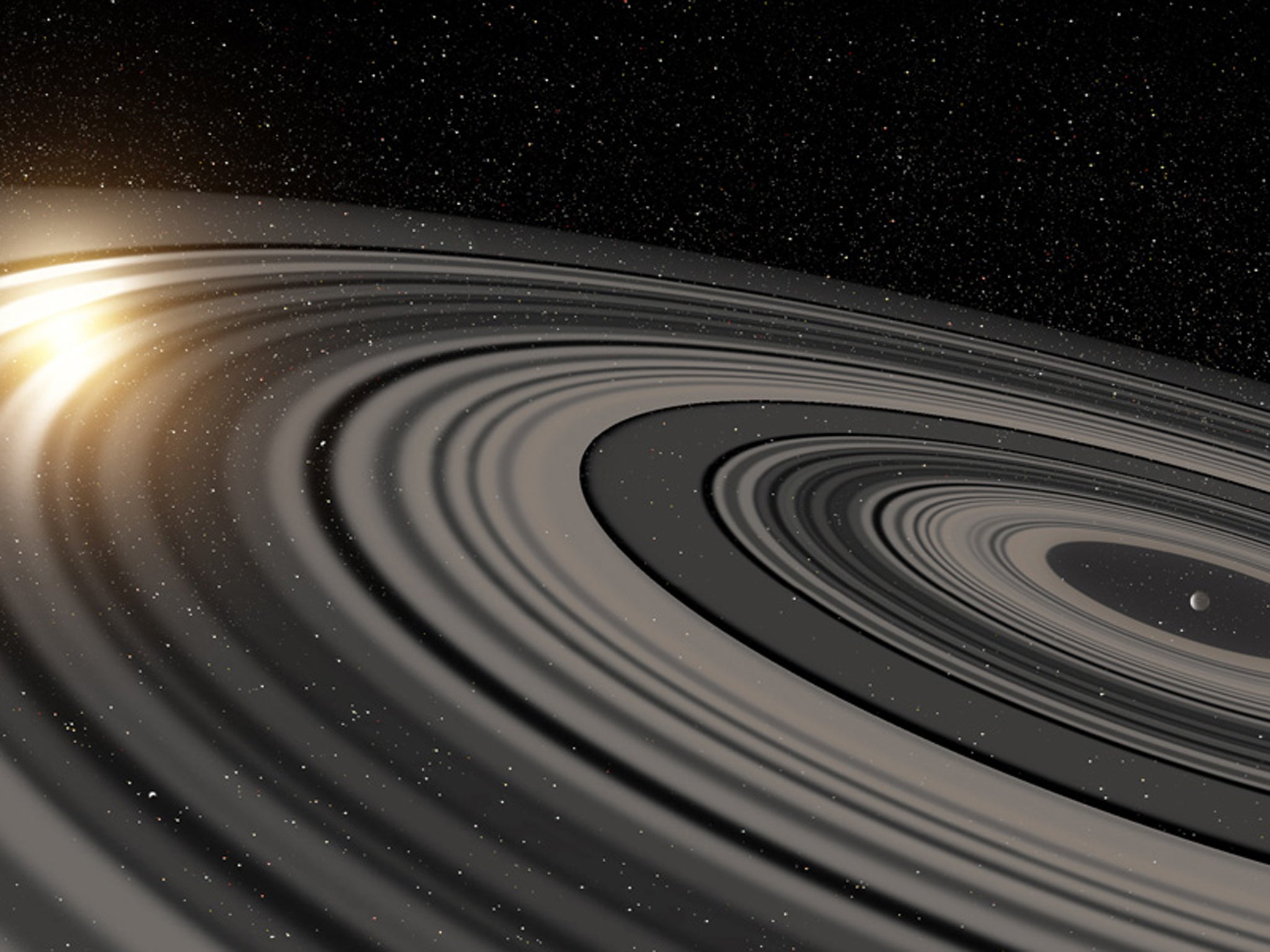The Independent's journalism is supported by our readers. When you purchase through links on our site, we may earn commission.
Super Saturn: huge planet found lurking in space could offer clues to how moons are formed
The planet’s ring system is 200 times bigger than Saturn’s, and is the first to be found outside of our Solar System

A huge planet-like body found in space could be key to telling us how moons are formed.
Scientists have been researching the huge, young planet and have found that the huge rings that surround it could offer clues to the formation of satellites. The ring system is the first of its kind to be found outside of our solar system.
The planet, known as J1407b, was discovered in 2012 but scientists have just completed a detailed study of data about it.
The research shows that there are 30 rings around the planet. But between those rings are gaps, which indicate that satellites or exomoons have formed between them.
“The planetary science community has theorized for decades that planets like Jupiter and Saturn would have had, at an early stage, disks around them that then led to the formation of satellites,” said Eric Mamajek, from the University of Rochester, who has been studying the planet with the Leiden Observatory’s Matthew Kenworthy. “However, until we discovered this object in 2012, no-one had seen such a ring system.”
The planet is much larger than Jupiter or Saturn, scientists said. If it were near enough to be visible from Earth with the naked eye, it would dominate the sky.
“If we could replace Saturn’s rings with the rings around J1407b, they would be easily visible at night and be many times larger than the full moon,” Matthew Kenworthy said.
The planet is about 400 light-years from Earth.
Exoring model for J1407b from Matthew Kenworthy on Vimeo.
A huge amount of material is contained in the objects and rings that are circling the planet.
“If you were to grind up the four large Galilean moons of Jupiter into dust and ice and spread out the material over their orbits in a ring around Jupiter, the ring would be so opaque to light that a distant observer that saw the ring pass in front of the sun would see a very deep, multi-day eclipse,” Mamajek said.
“In the case of J1407, we see the rings blocking as much as 95 percent of the light of this young Sun-like star for days, so there is a lot of material there that could then form satellites.”
Subscribe to Independent Premium to bookmark this article
Want to bookmark your favourite articles and stories to read or reference later? Start your Independent Premium subscription today.

Join our commenting forum
Join thought-provoking conversations, follow other Independent readers and see their replies